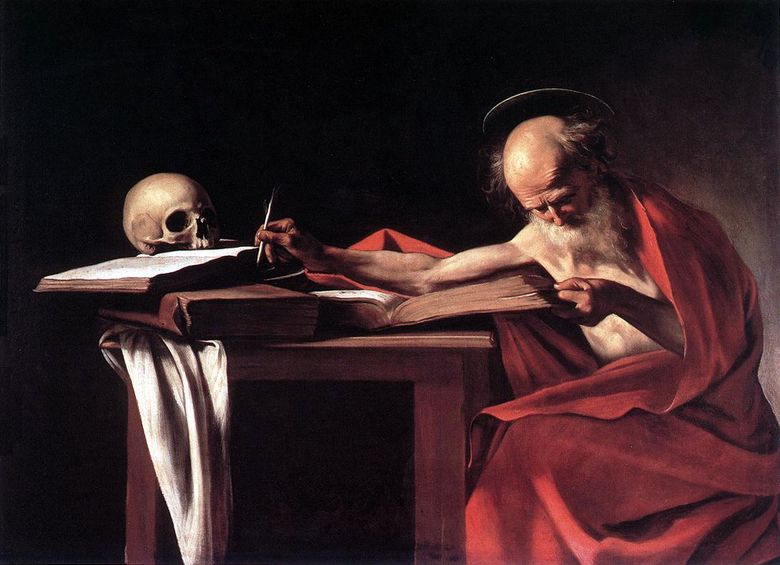
In this picture, written by Caravaggio specifically for Shipione Borghese, the artist portrayed St. Jerome for his scholarly labors. Pouring through the invisible window, the light snatches from the twilight the red robe of the saint, his head with the steep, convex forehead of the thinker, the book, the skull lying on the table.
“Caravaggio… acquired every day more and more fame,” Giovanni Pietro Bellori, a biographer wrote about him, mainly because of the color, no longer soft and light, as before, but saturated, with strong shadows, and he often used many black color to give the forms relief, and before that he was carried away by this manner that he did not let out any of his figures in the sun, but put them in a closed room… using a ray of light, vertically falling on the main parts of the figure, leaving everything The rest is in the shade, so that chiaroscuro would give A sharp effect.
The then Roman painters were delighted with this innovation, especially the young… “St. Jerome, one of the fathers of the church, a translator of the Bible into Latin, is immersed in reading the divine Book, on his forehead – a seal of extreme concentration, a pen in his hand. At the same time, the image created by the artist reminds of the hero’s life in the desert, where he prayed and repented of his sins, as evidenced by his hermit’s attire.
The skull, one of the attributes of Hieronymus, illustrates the Latin saying “memento mori” – “remember death”, but also symbolizes the victory of the human spirit over mortal flesh. Between this symbol and the saint is the unfolded Bible as the path that must be passed from the life of the mere mortal to the heights of the spirit. The horizontally stretched composition, so beloved by the artist, points to this long distance, but the hand with the pen shortens it.
 Penitent Magdalene by Michelangelo Merisi and Caravaggio
Penitent Magdalene by Michelangelo Merisi and Caravaggio Saint Jérôme derrière le livre – Michelangelo Merisi da Caravaggio
Saint Jérôme derrière le livre – Michelangelo Merisi da Caravaggio Saint Jerome by Jusepe de Ribera
Saint Jerome by Jusepe de Ribera Patient Bacchus by Michelangelo Merisi and Caravaggio
Patient Bacchus by Michelangelo Merisi and Caravaggio St. John the Baptist by Michelangelo Merisi and Caravaggio
St. John the Baptist by Michelangelo Merisi and Caravaggio Musicians by Michelangelo Merisi and Caravaggio
Musicians by Michelangelo Merisi and Caravaggio Schulers by Michelangelo Merisi and Caravaggio
Schulers by Michelangelo Merisi and Caravaggio A young man with a lute by Michelangelo Merisi da Caravaggio
A young man with a lute by Michelangelo Merisi da Caravaggio